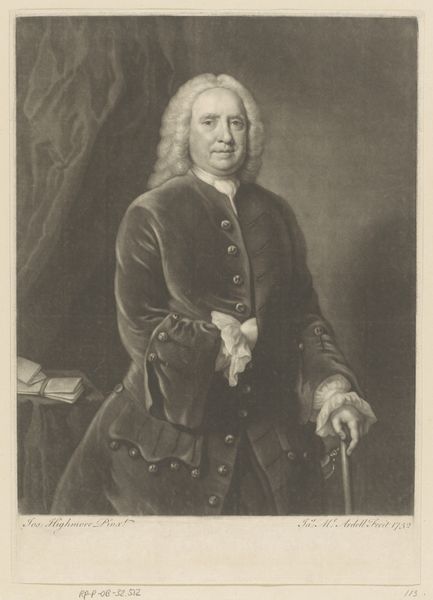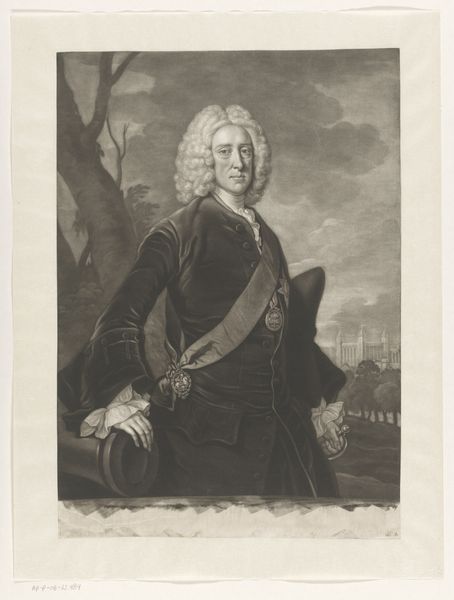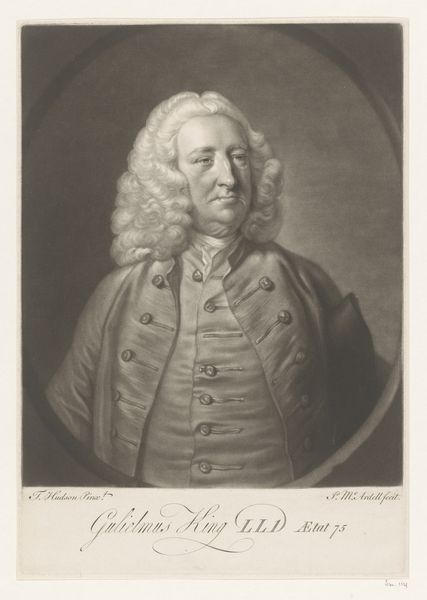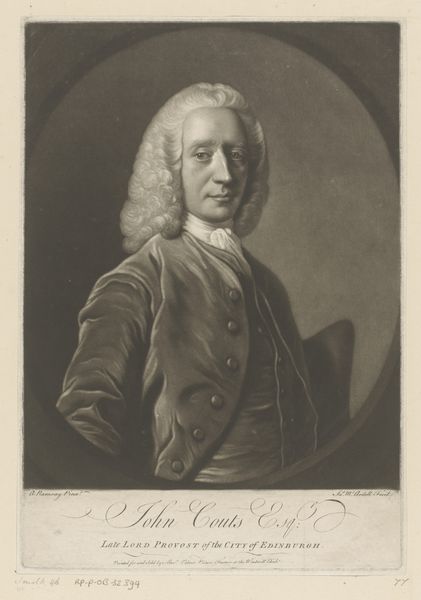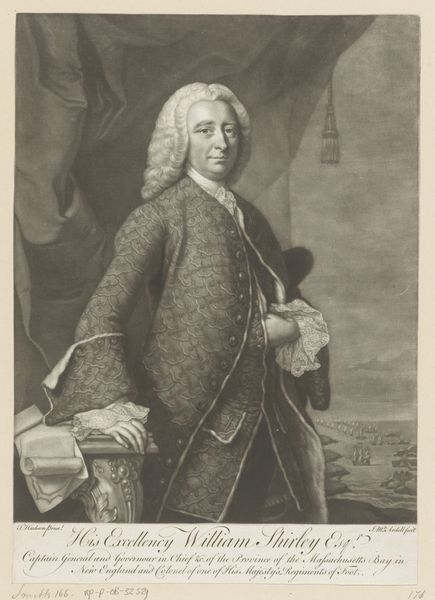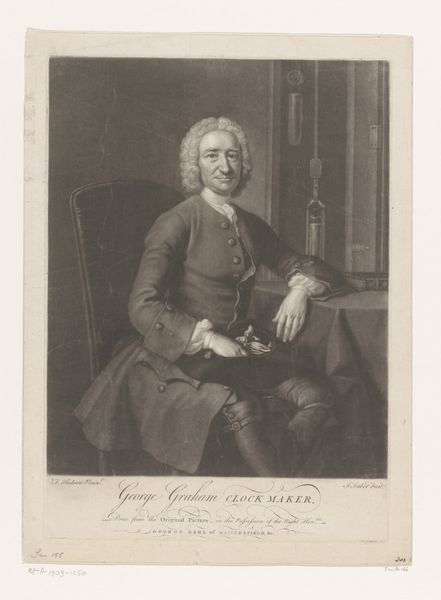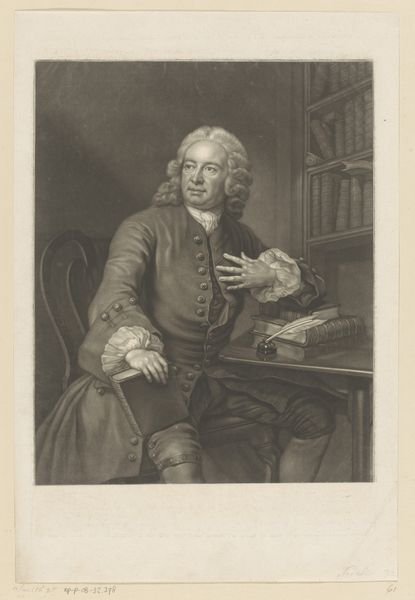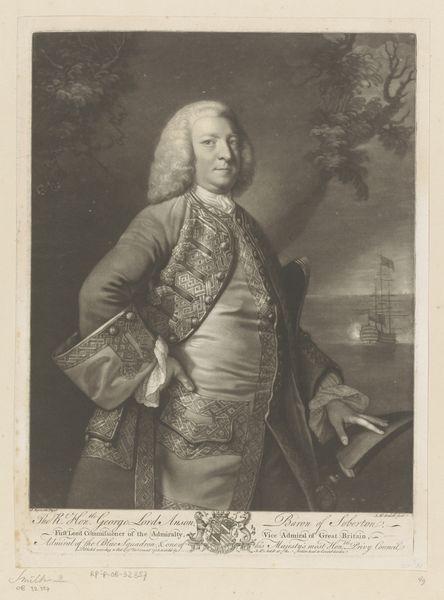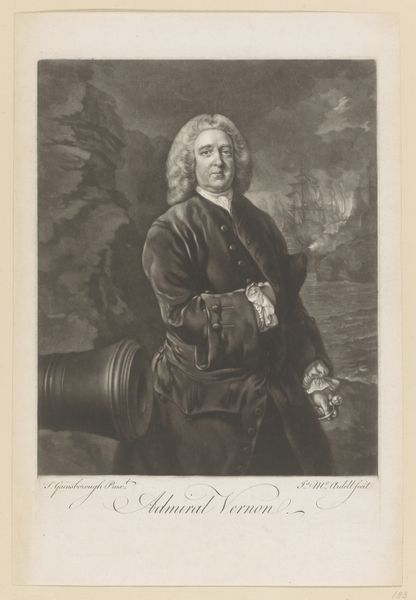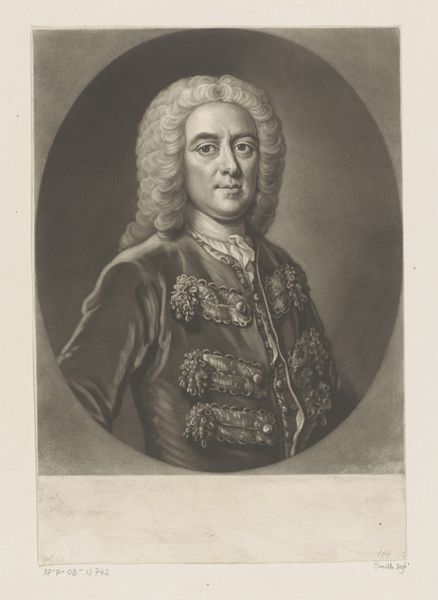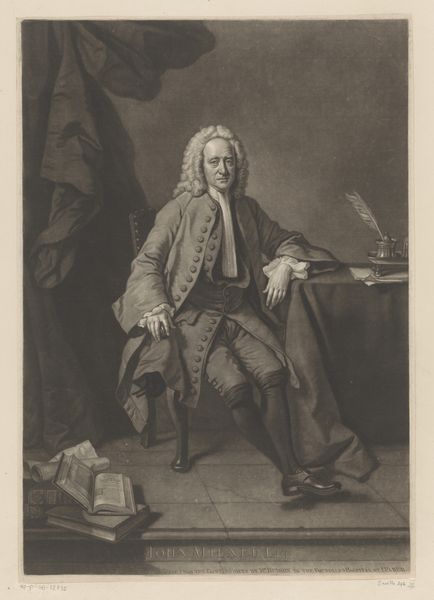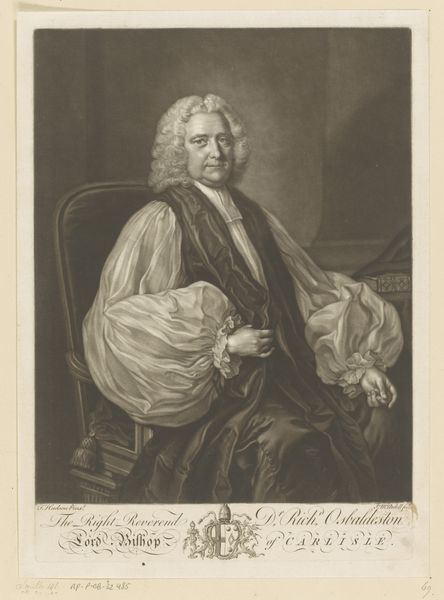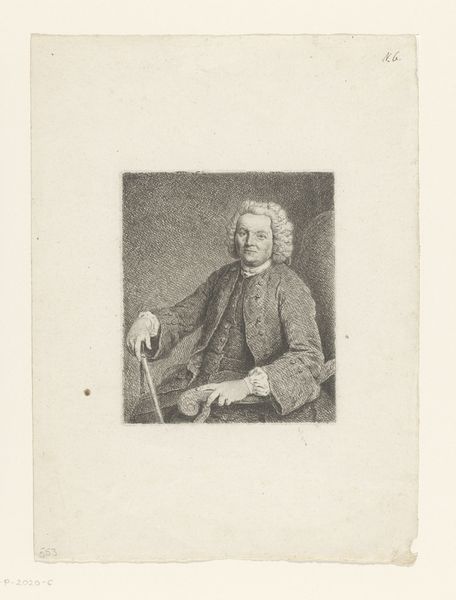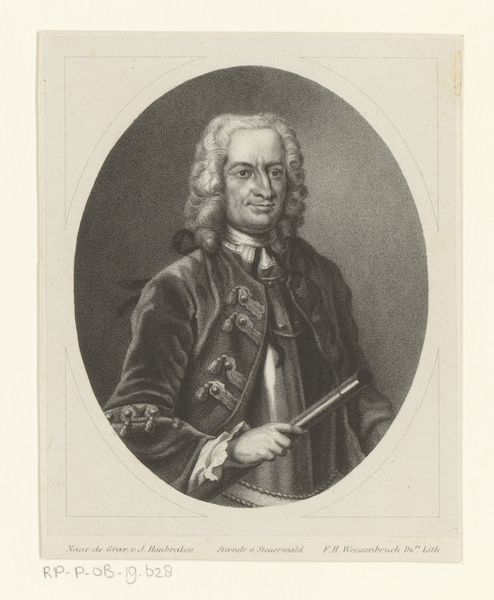
engraving
#
portrait
#
baroque
#
engraving
Dimensions: height 351 mm, width 251 mm
Copyright: Rijks Museum: Open Domain
Curator: Welcome. Today, we're looking at a rather intriguing piece titled "Portret van Timothy Bennett" created between 1752 and 1765. The artist here is James McArdell, and it’s an engraving now housed in the Rijksmuseum. Editor: Immediately, what strikes me is the masterful use of chiaroscuro. The contrast between light and dark gives the figure a tangible presence, a sense of almost Baroque drama in its composition. The cascading curves of his wig too! Curator: Indeed, the play of light draws the eye. But I'm more interested in the inscription below the portrait, detailing Bennett’s efforts regarding electoral enfranchisement. Note his occupation clearly labelled, as a Shoemaker. This piece actively challenges the class structures implicit in most portraiture. It serves not only as a representation, but as evidence of social and political battles. Editor: A valid point, but focusing on form: see how the composition centers on a pyramidal arrangement anchored by Bennett’s steady gaze and descending through his torso and leg, to his cane. This constructs stability and authority. Even if shoemakers didn’t typically appear in formal portraits! The lines are expertly carved for textural accuracy. Curator: Consider also the choice of engraving as a medium. This choice allowed for broader dissemination of Bennett’s image. Prints such as this became vital tools to broadcast ideals in an era of emerging political movements, offering a stark contrast to singular, privately-held painted portraits of aristocrats. How labour impacts its final availability informs much about art. Editor: While I grant the sociopolitical relevance, notice how the engraver varies line thickness to render details like the subtle aging of Bennett’s face. And observe the economy of line which implies the velvety texture of the coat. The technique itself deserves recognition divorced from its distribution. Curator: Fair enough. I see this print more as an artefact interwoven with histories of political reform—art shaped and made relevant through social use, more than pure aesthetic construction. Editor: Perhaps we both see facets of the same meticulously designed artwork. What strikes you now as we move to the next piece?
Comments
No comments
Be the first to comment and join the conversation on the ultimate creative platform.
